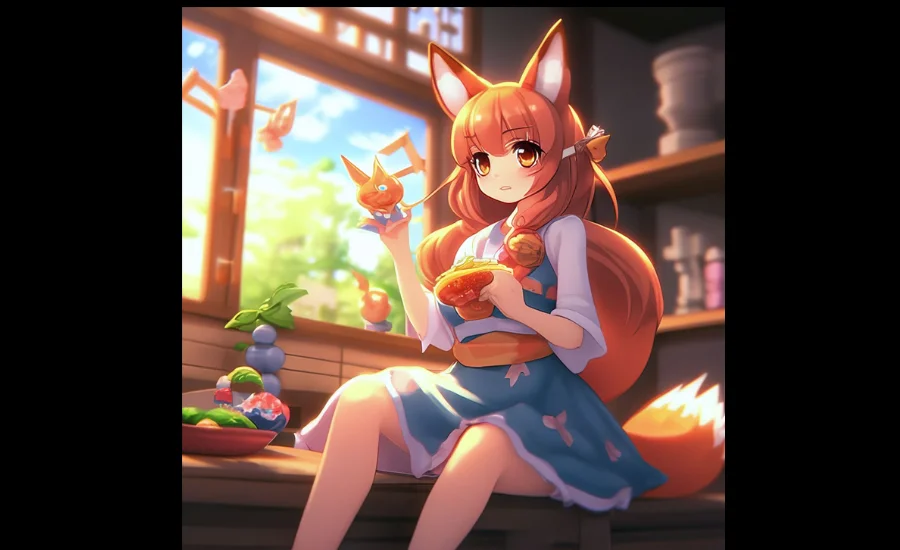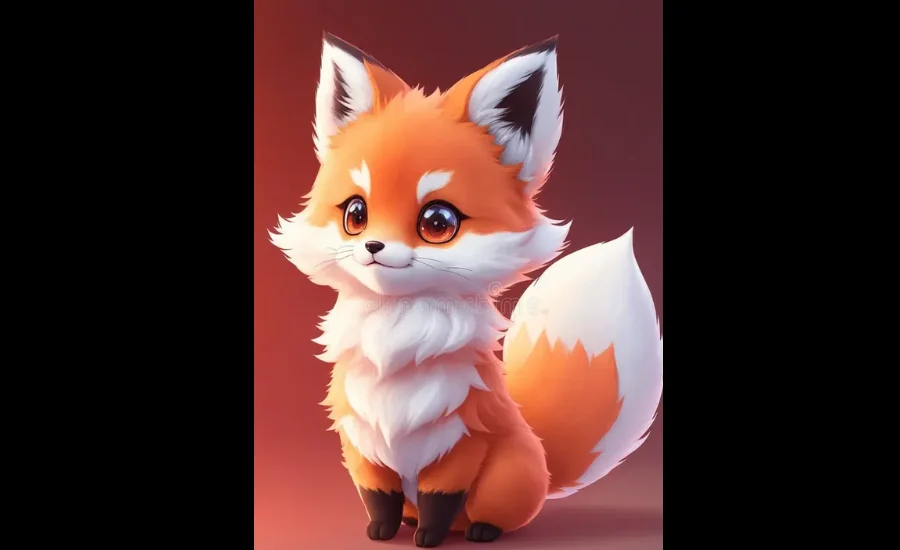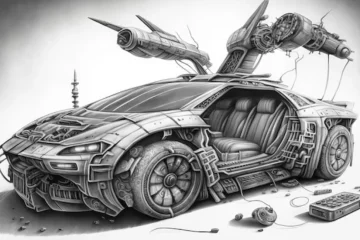Anime:hj7fn2oc0me= fox has always been a medium where folklore, mythology, and imaginative storytelling converge to craft enchanting realms. A recurring element in this art form is the representation of fox spirits, known as kitsune in Japanese mythology. These mystical beings captivate many anime fans with their remarkable shape-shifting abilities, sharp intellect, and the intriguing duality of their character, often oscillating between benevolent allies and mischievous tricksters.
The kitsune’s complexity adds a rich layer to anime narratives, reflecting broader themes of transformation and balance prevalent in Japanese folklore. Through the exploration of these enigmatic fox spirits, viewers gain a deeper understanding of the cultural stories that continue to shape modern anime. The presence of kitsune enriches the storytelling experience, inviting audiences to delve into a world where the ordinary meets the magical.
The Cultural Significance of Kitsune Across Asia
The idea of fox spirits is not exclusive to Japan; it is also present in Korean and Chinese folklore. However, over time, the Japanese kitsune has evolved into a unique and significant cultural figure. The term “kitsune” is thought to originate from ancient Japanese words that translate to “come always” or “always comes,” symbolizing the fox’s pervasive role in Japanese traditions and beliefs.
In early Japanese texts, such as the 9th-century “Nihon Ryoiki,” kitsune are depicted as shape-shifters with the remarkable ability to transform into human beings. This transformative quality has solidified their status in folklore, where they often take on various roles, including:
- Deceptive tricksters who outwit humans
- Loyal guardians and devoted servants
- Divine messengers of Inari, the Shinto deity associated with rice and prosperity
The kitsune embodies rich symbolism, representing a range of attributes, including:
- Wisdom and intelligence: The kitsune is often seen as a source of knowledge.
- Cunning and trickery: Their playful nature often leads them to deceive those around them.
- Loyalty and devotion: In many stories, they serve as faithful companions to humans.
- Connection between realms: Kitsune act as intermediaries between the human and spirit worlds, bridging the gap between the two.
Through these multifaceted representations, the kitsune continues to captivate audiences, serving as a powerful symbol of both the mystical and the mundane in Japanese culture.
The Intriguing Nature of the Kitsune in Anime:hj7fn2oc0me= Fox
The anime:hj7fn2oc0me= fox, commonly referred to as the fox spirit, is a mesmerizing and multifaceted character in Japanese folklore. Rich in symbolism and deeply rooted in Japan’s mythological heritage, the kitsune occupies a vital role in the nation’s cultural and spiritual landscape. Celebrated for its keen intellect, shape-shifting prowess, and otherworldly abilities, the kitsune has captivated storytellers and audiences for generations.
The allure of the kitsune stems not only from its enchanting qualities but also from its complex narratives that explore themes of transformation, loyalty, and the relationship between humans and the spirit world. This fascinating spirit continues to inspire a wide array of stories and interpretations in both traditional folklore and modern anime, showcasing the enduring legacy of the kitsune in Japanese culture.
The Shape-Shifting Abilities of the Kitsune in Anime:hj7fn2oc0me= Fox

| Tail Count | Age (Approx.) | Abilities |
|---|---|---|
| 1 | 100 years | Basic shape-shifting |
| 3 | 300 years | Advanced illusions, mind-reading |
| 5 | 500 years | Elemental magic, seeing the future |
| 7 | 700 years | Access to celestial realms |
| 9 | 1000+ years | Near-infinite wisdom, god-like powers |
One of the most fascinating elements of kitsune mythology is their remarkable ability to shape-shift, a power that is pivotal to many of their stories and has become a hallmark of the anime:hj7fn2oc0me= fox archetype. Legends suggest that a kitsune can transform into human form after reaching a certain age, typically around 100 years. The most formidable among them are often depicted with nine tails, which symbolize their advanced age and accumulated wisdom.
The number of tails a kitsune possesses is indicative of its age and abilities, showcasing a journey from a relatively simple magical being to a highly powerful entity. Each tail signifies not only age but also the depth of their mystical powers, reflecting the Japanese cultural belief in wisdom earned through longevity and experience. For instance, a kitsune with one tail is around 100 years old and possesses basic shape-shifting skills, while a nine-tailed kitsune, with over a thousand years of existence, is believed to have near-infinite wisdom and god-like powers.
This progression emphasizes the kitsune’s evolution and reinforces the cultural value placed on age and wisdom, making them enduring symbols of the richness of Japanese folklore.
The Shape-Shifting Mystique of the Kitsune in Anime:hj7fn2oc0me= Fox
Among the most intriguing characteristics of the kitsune is its remarkable ability to shape-shift, particularly into human form. In various tales, these fox spirits often assume the guise of beautiful women, enchanting unsuspecting human men. In some narratives, they genuinely develop feelings for their human partners, while in others, their relationships serve as elaborate tricks or deceptions.
Kitsune are also known to transform into different creatures or even inanimate objects, skillfully misleading humans. Their capacity to create intricate illusions can bewilder travelers, leading them to see things that do not exist or misdirecting them entirely. This mastery of shape-shifting not only highlights the kitsune’s cunning nature but also underscores their profound connection to both the physical and spiritual realms, embodying the complexity and duality that defines these mythical beings.
The Dual Nature of Kitsune in Anime:hj7fn2oc0me= Fox
In Japanese folklore, kitsune are typically divided into two primary categories, each embodying distinct characteristics. Zenko (善狐), meaning “good foxes,” are the benevolent kitsune closely associated with Inari, the deity of rice and prosperity. These fox spirits often act as guardians and guides, bringing good fortune to those they favor.
On the other hand, Yako (野狐), or nogitsune, are known as “field foxes.” These kitsune are more mischievous and occasionally malevolent, notorious for playing tricks on humans and stirring up trouble. This duality is a fundamental aspect of the kitsune archetype, reflecting the complexity inherent in these mythical beings.
It is not uncommon for a single kitsune character to embody both benevolent and mischievous traits, enriching their portrayal in stories and anime. This multifaceted nature invites audiences to explore the deeper meanings behind kitsune legends, highlighting the intricate balance between good and evil within their narratives.
The Two Faces of Kitsune in Anime:hj7fn2oc0me= Fox
In Japanese folklore, kitsune are commonly categorized into two main groups: zenko and yako. Zenko, or “good foxes,” are the benevolent variety, closely linked with Inari, the deity of rice and agriculture. These kitsune serve as protectors and messengers, symbolizing good fortune and prosperity. They are often depicted as guardians of temples and are believed to assist humans, bringing blessings and good luck to those they encounter.
Conversely, yako, also known as nogitsune or “wild foxes,” embody a more mischievous and potentially malevolent nature. These trickster spirits are infamous for causing chaos and playing pranks on unsuspecting humans. In extreme cases, they are said to possess individuals, a phenomenon referred to as kitsunetsuki. Historically, this possession was considered a form of mental illness, highlighting the deep-seated fears associated with these enigmatic creatures.
The contrast between zenko and yako highlights the duality of the kitsune’s character. While they can offer protection and blessings, they also embody the unpredictable and sometimes perilous aspects of the supernatural, inviting audiences to explore the rich and complex narratives surrounding these legendary fox spirits.
The Fascinating Phenomenon of Kitsunetsuki in Anime:hj7fn2oc0me= Fox

One of the more captivating elements of kitsune folklore is the notion of kitsunetsuki, or fox possession. This belief was historically significant in Japanese culture, where unusual behaviors and changes in personality were often attributed to the influence of a fox spirit inhabiting a person.
Those believed to be affected by kitsunetsuki exhibited various symptoms, including strange speech and actions, aversions to specific foods or objects, and sudden displays of uncanny knowledge. Additionally, physical changes, such as a fox-like appearance in the eyes or facial features, were often reported.
Although contemporary medicine has largely attributed these phenomena to mental health issues or neurological disorders, the concept of kitsunetsuki persists as a powerful narrative device in Japanese storytelling and anime. It serves as a compelling way to explore themes of identity, transformation, and the blurred lines between the human and spirit worlds, keeping the legend of the kitsune alive in modern culture.
Kitsunetsuki: The Dark Side of Kitsune Folklore in Anime:hj7fn2oc0me= Fox
One of the most compelling aspects of kitsune folklore is the concept of kitsunetsuki, or fox possession. In ancient Japan, it was believed that kitsune had the ability to inhabit humans, often entering through the fingernails or between the teeth. Those who were thought to be possessed by a kitsune would display erratic behaviors, speak in unfamiliar languages, or even assert that they were the kitsune itself.
In some instances, the individuals under this influence would experience enhanced abilities, gaining supernatural strength or insight into knowledge they would not normally possess. Kitsunetsuki was regarded as a serious condition, prompting the performance of exorcisms to free the afflicted person from the fox spirit’s grasp.
This element of kitsune mythology introduces a darker, more enigmatic aspect to the creature’s portrayal in folklore, blurring the boundaries between spiritual influence and mental illness in historical beliefs. As a result, kitsunetsuki enriches the narrative landscape of anime and storytelling, providing a deeper exploration of the complexities surrounding the kitsune’s role in human life.
The Enduring Legacy of Kitsune in Anime:hj7fn2oc0me= Fox
The allure of the kitsune remains strong, transcending the boundaries of time. These fox spirits have smoothly transitioned from ancient folklore into modern popular culture, especially within anime and manga. Their lasting impact is evident across various forms of Japanese art and literature, spanning from traditional Noh plays to contemporary novels and films.
In the West, the intrigue surrounding kitsune has grown alongside the increasing popularity of anime and broader Japanese cultural elements. This global fascination has prompted the emergence of kitsune-like characters in Western media, solidifying their status in the collective imagination of fantasy enthusiasts around the world. The kitsune’s captivating nature continues to inspire new stories, ensuring their place in the ever-evolving landscape of global storytelling.
The Lasting Impact of Kitsune in Japanese Culture and Beyond
The role of the kitsune in Japanese folklore extends far beyond its mythological roots, leaving a profound impact on Japanese art, literature, and contemporary popular culture. Fox spirits are prominently featured in traditional Noh and Kabuki theater, where their narratives of love, trickery, and transformation are vividly brought to life.
In modern Japan, kitsune continue to inspire creators, appearing in manga, anime, and video games. Characters inspired by these fox spirits often embody themes of transformation, intelligence, and cunning, mirroring the intricate nature of the kitsune itself.
The ability of the kitsune to adapt to various contexts while preserving its fundamental essence showcases its enduring relevance in Japanese culture. Whether regarded as a divine messenger, a clever trickster, or a formidable agent of transformation, the kitsune remains one of the most cherished and enigmatic figures in Japanese folklore, captivating audiences both domestically and internationally.
The Kitsune Archetype in Anime:hj7fn2oc0me= Fox
As we explore the captivating realm of anime, the kitsune archetype emerges as a dynamic and multifaceted storytelling device. The anime:hj7fn2oc0me= fox has become a beloved character type, cherished by both creators and fans for its depth and rich cultural significance.
Kitsune characters typically possess a unique blend of physical and personality traits. They often take on human forms while retaining fox-like characteristics, such as pointed ears and a bushy tail. Their striking golden or amber eyes and flowing, light-colored hair further enhance their ethereal presence.
In terms of personality, kitsune are portrayed as wise and knowledgeable beings, often imbued with a playful, mischievous spirit. They are loyal companions to those they care for, yet can also appear aloof or enigmatic, adding layers to their character.
Kitsune often fill various roles in anime narratives, serving as mentors or guides who aid protagonists on their journeys. They can also be depicted as love interests with a supernatural flair, tricksters who challenge the hero, or powerful allies and formidable adversaries. This versatility makes the kitsune a captivating figure that enriches storytelling across diverse genres, ensuring their lasting appeal in the world of anime.
The Enigmatic Kitsune:hj7fn2oc0me= Fox in Anime
The kitsune, or anime:hj7fn2oc0me= fox spirit, is a captivating figure with deep roots in Japanese mythology, evolving into one of the most intriguing archetypes within the anime medium. Renowned for its cunning, intelligence, and shape-shifting abilities, the kitsune embodies a diverse array of traits, ranging from protector and guide to trickster and antagonist. In anime, this archetype serves as a powerful vehicle for exploring themes of transformation, duality, and the blurred boundaries between the human and supernatural realms.
Kitsune in Japanese Mythology: The Roots of the Archetype
To fully appreciate the kitsune’s role in anime, it’s vital to grasp its mythological origins. In Japanese folklore, the kitsune is depicted as a mystical fox serving as a messenger and protector for Inari, the deity of rice and fertility. These fox spirits are celebrated as shape-shifters, often taking on human form, particularly that of enchanting women.
As kitsune age, their powers and wisdom intensify, with the number of tails they possess—up to nine—symbolizing their strength and intelligence. This duality allows kitsune to act as both benevolent protectors and mischievous tricksters, illustrating the complexity of their nature. This rich tapestry of good and evil, human and spirit, creates a versatile character type that anime has embraced with enthusiasm, making the kitsune a central figure in contemporary storytelling.
Memorable Kitsune Characters in Anime:hj7fn2oc0me= Fox

Let’s delve into some of the most iconic kitsune characters that have captured audiences in anime:
Kurama (Yu Yu Hakusho): Kurama is a formidable fox demon who becomes a complex ally to the series’ protagonist. He embodies the duality often associated with kitsune, demonstrating both cunning intelligence and unwavering loyalty throughout the series.
Holo (Spice and Wolf): Holo is a wise wolf deity with numerous kitsune-like characteristics. Her relationship with the human protagonist navigates themes of loyalty and the intersection of the supernatural with everyday life, showcasing her playful yet profound nature.
Senko-san (The Helpful Fox Senko-san): Senko is a benevolent kitsune who takes on the role of caretaker for a weary salaryman. She represents the nurturing aspects of kitsune lore, bringing warmth and comfort to those around her.
Yoko (Inari, Konkon, Koi Iroha): Yoko is a young kitsune serving Inari, who befriends the human protagonist. Her character explores the theme of kitsune as divine messengers and guardians, highlighting their role in bridging the gap between humans and the spirit world.
These characters illustrate the versatility of the kitsune archetype, appearing in a range of genres from action-packed shonen series to heartwarming slice-of-life comedies and romantic fantasies, reflecting the enduring appeal of these fox spirits in anime.
The Allure of the Kitsune: Shape-Shifting and Transformation
The ability to transform forms, especially between fox and human, is a hallmark of the kitsune archetype in anime. This shape-shifting capability often symbolizes personal evolution, reflecting characters who wrestle with dual identities or concealed facets of themselves. Many anime narratives feature kitsune characters blending into human society, masking their true natures, which adds an intriguing layer of mystery and suspense to the story.
In Kamisama Kiss, for instance, Tomoe, a kitsune, primarily exists in human form while serving as the protector of the protagonist. His unique capacity to alternate between fox and human shapes is pivotal to his character development and his interactions with others.
Intelligence and Cunning
In anime, kitsune characters are frequently depicted as exceptionally intelligent, using their sharp wits and cunning to navigate intricate scenarios. This intelligence harkens back to their mythological roots, where kitsune were known for their clever strategies. This can manifest in various ways, such as characters becoming master manipulators, adept at outsmarting their foes or tackling challenges with ingenuity rather than sheer strength.
Kurama from Yu Yu Hakusho exemplifies this trait beautifully. As a fox spirit who has taken on a human guise, Kurama uses his intellect to outmaneuver adversaries and safeguard his friends, often employing elaborate strategies to meet his objectives.
Ambiguity and Duality
The kitsune archetype in anime is particularly compelling due to its inherent duality. The anime:hj7fn2oc0me= fox often embodies moral ambiguity, straddling the line between good and evil. This duality is evident in their roles as protectors and tricksters—loyal yet deceptive, compassionate yet manipulative. Depending on their motivations and the context, kitsune can serve as allies or adversaries.
Yoko Kurama, also from Yu Yu Hakusho, personifies this duality. Initially portrayed as a ruthless demon fox, his character evolves after he adopts a human form, developing a compassionate side and a moral compass. This internal struggle between his past and present adds depth and complexity to his character, making him an engaging figure.
Loyalty and Protection
Despite their playful reputation, many kitsune characters in anime demonstrate fierce loyalty and protectiveness. Often, they take on the role of guardians for weaker characters or trusted companions. This aspect of their personality resonates with the kitsune’s traditional role in Japanese mythology as messengers and protectors of the deity Inari. Their loyalty typically stems from mutual respect or deep personal connections.
In Kamisama Kiss, Tomoe initially hesitates to serve the protagonist, Nanami. However, as the narrative unfolds, his protective instincts intensify, ultimately making him one of her most devoted allies. This transformation from reluctance to unwavering loyalty is a prevalent theme in stories featuring kitsune.
Romantic Appeal
Kitsune characters frequently exude allure, both in appearance and personality. Their charm and beauty—especially in human form—make them compelling candidates for romantic storylines. This allure is rooted in the mythological kitsune’s ability to metamorphose into beautiful women to seduce or deceive men. In anime, these relationships often delve into emotional complexities, exploring themes of trust, sacrifice, and the intricacies of loving a supernatural entity.
The romantic dynamic between Tomoe and Nanami in Kamisama Kiss serves as a central thread of the narrative, blending humor with heartfelt moments. Tomoe’s internal conflict regarding his feelings—balancing his identity as a powerful kitsune with his role as a protector—infuses their relationship with significant emotional depth.
The Enduring Allure of Kitsune in Anime
The continued fascination with kitsune in anime can be traced to a variety of compelling attributes that resonate with audiences.
Shape-Shifting Appeal: The kitsune’s ability to transform between fox and human forms captures a deep human intrigue surrounding change and hidden identities. This transformative power not only enriches character arcs but also paves the way for dynamic storytelling, often leading to unexpected twists and significant character development.
Complex Morality: Kitsune characters are inherently multifaceted, allowing for rich character development and unpredictable narratives. Their dual nature means they can be both allies and antagonists, keeping viewers engaged and continually guessing their true intentions.
Romantic Intrigue: Kitsune frequently serve as enigmatic and captivating love interests, infusing supernatural elements into romance plots. The concept of a timeless being falling for a human creates narratives rich in themes of forbidden love and emotional complexity.
Cleverness and Strategy: Renowned for their intelligence, kitsune characters excel as problem solvers and strategists. Their cunning nature often leads them to outsmart adversaries, delivering satisfying resolutions to intricate storylines.
Mystical Essence: Kitsune introduce an enchanting mystical quality to narratives, appealing to viewers’ sense of wonder and curiosity. Their ties to the spirit world allow stories to explore themes that transcend ordinary experiences.
Cultural Significance: For Japanese audiences, kitsune evoke connections to traditional folklore and cultural beliefs, adding layers of depth to the characters and the narratives in which they are woven.
Iconic Kitsune Characters in Anime
Kurama from Yu Yu Hakusho: Kurama stands as one of the most iconic kitsune figures in anime, being a demon fox spirit reincarnated as a human. His strategic intelligence and emotional depth resonate with fans, exemplifying the duality of kitsune through his transition from a ruthless past to a compassionate present.
Tomoe from Kamisama Kiss: As the quintessential kitsune, Tomoe skillfully balances his roles as protector, trickster, and romantic lead. His shape-shifting abilities, loyalty to the protagonist, and emotional complexities make him a standout character, enriching the series with his multifaceted personality.
Senko from The Helpful Fox Senko-san: In contrast to more mischievous kitsune, Senko represents the nurturing side of the archetype. She is dedicated to offering comfort and emotional support to her overworked human companion, embodying the benevolent aspects of kitsune lore.
Tamamo no Mae from Fate/Grand Order: Tamamo no Mae is a formidable nine-tailed kitsune who operates as both a servant and a villain within the Fate series. Her enchanting beauty, intelligence, and magical prowess make her a compelling character, while her intricate backstory adds significant depth to her motivations and actions.
These characters illustrate the versatility and richness of the kitsune archetype, solidifying its place in anime as a captivating and enduring element of storytelling.
The Fascination with Kitsune Shape-Shifting
The kitsune’s ability to shape-shift is one of its most intriguing characteristics, capturing the universal allure of transformation and the fluidity of identity. In anime, this power serves several narrative purposes that enrich storytelling.
Shape-shifting is often employed to create dramatic reveals, allowing characters to surprise both other characters and the audience. This element adds layers of intrigue and suspense to the plot, keeping viewers engaged as identities shift and reveal deeper truths.
Moreover, kitsune transformations invite exploration of themes related to identity and self-discovery. Characters grappling with their true selves often use shape-shifting to navigate their inner conflicts, illustrating how appearances can mask profound realities.
Visually stunning transformation sequences are another hallmark of kitsune representation in anime. These captivating moments not only highlight the characters’ abilities but also symbolize their complex nature. For instance, in Yu Yu Hakusho, Kurama’s shift from his human form to his true kitsune form marks a critical turning point in the story. This transformation not only showcases his immense power but also underscores the duality inherent in his character, making it a memorable highlight of the series.
The Symbolism of the Kitsune Archetype in Anime
The kitsune archetype in anime is rich with symbolism, often embodying broader themes such as transformation, duality, and the intricate interplay between the human and supernatural realms. Kitsune characters challenge conventional boundaries, navigating the fine lines between good and evil, loyalty and deceit, as well as reality and illusion. This complexity renders them versatile figures that can seamlessly adapt to various narrative styles, from intense action sequences to heartfelt romantic comedies.
At its core, the kitsune’s shape-shifting ability reflects the adaptability inherent in the archetype. Whether they assume the role of wise guardians, clever tricksters, or morally ambiguous antiheroes, kitsune characters play a crucial role in anime storytelling. They serve as a testament to the enduring influence of traditional folklore within contemporary narratives, captivating audiences with their multifaceted nature and timeless appeal.
Kitsune as Romantic Figures in Anime
The depiction of kitsune as romantic entities in anime draws on the timeless theme of supernatural beings developing relationships with humans. This dynamic creates a fascinating interplay where immortal kitsune navigate their emotions for mortals, highlighting significant themes.
The relationships often explore the complexities that arise from cultural and species differences, introducing compelling conflicts. Additionally, the inherent power imbalance between a magical being and a human heightens the tension in these romances.
A notable example is “Spice and Wolf,” where the bond between the wolf deity Holo and the human merchant Lawrence lies at the heart of the narrative. Their relationship delves into themes of trust, companionship, and the poignant realities of a love that spans the divide between mortal and immortal, enriching the story with emotional depth and complexity.
The Enduring Appeal of Kitsune in Anime:hj7fn2oc0me= Fox
Kitsune characters, drawn from rich Japanese folklore, have established themselves as cherished archetypes in anime:hj7fn2oc0me= fox, manga, and popular culture. Known for their mystical charm, intelligence, and shape-shifting abilities, these fox spirits embody a blend of human and supernatural traits that captivate audiences. Kitsune can be portrayed as protectors, tricksters, or morally ambiguous figures, showcasing a complexity that enhances their allure.
The Fascination with Shape-Shifting
A defining characteristic of kitsune is their ability to shape-shift, particularly into human forms. This remarkable power opens the door to a plethora of storytelling opportunities in anime:hj7fn2oc0me= fox, allowing for dramatic revelations and comedic situations. In this genre, these transformations symbolize adaptability and fluidity, enabling kitsune to traverse both the human and supernatural realms. This ability often serves as a metaphor for personal growth, allowing characters to explore themes of identity and self-discovery that resonate deeply with viewers.
Duality of Nature: Light and Dark

Kitsune characters are compelling due to their capacity to embody both benevolent and mischievous qualities. Japanese mythology distinguishes between zenko (good foxes) and yako (wild, trickster foxes), and anime:hj7fn2oc0me= fox often reflects this duality. These characters can shift between protective and loyal allies to cunning tricksters, depending on their motivations and circumstances. This unpredictability keeps audiences engaged, as their actions can vary dramatically based on the context, adding depth and intrigue to their narratives.
Romantic Dimensions of Kitsune
In many anime:hj7fn2oc0me= fox series, kitsune are depicted as romantic figures, especially when in human form. Their relationships with humans often delve into themes of loyalty, forbidden love, and sacrifice, creating deep emotional connections that enrich the story. The mystery and allure of kitsune enhance their romantic appeal, as their ability to shape-shift into alluring forms plays into age-old tropes of seduction. The tension between their supernatural origins and human emotions adds layers of complexity to these relationships, making them compelling and relatable.
Cunning and Intelligence
Kitsune are frequently characterized by their high intelligence and cunning, navigating complex situations with strategic thinking. This aspect of their personalities makes them formidable characters, whether as allies or antagonists in anime:hj7fn2oc0me= fox narratives. Their cleverness often creates tension in interactions, challenging other characters to question their beliefs and decisions. This intellectual depth adds excitement to their roles, as the true intentions of kitsune are not always apparent.
The Mystical Connection
Kitsune possess strong ties to the supernatural, which enhances their appeal in fantasy and adventure narratives within anime:hj7fn2oc0me= fox. Their magical abilities, including illusion-casting and fire control, infuse a sense of awe and otherworldliness. Often serving as conduits between the mortal realm and the spirit world, kitsune guide characters through mystical experiences, protect sacred spaces, and deliver messages from the divine. This connection enriches their characters, imbuing them with a sense of reverence and depth.
Emotional Complexity
One of the primary reasons kitsune characters resonate with audiences is their emotional complexity. Unlike one-dimensional figures, kitsune experience a spectrum of human-like emotions, such as love, loyalty, loss, and betrayal. Their dual identity, existing between the realms of human and fox, facilitates nuanced storytelling that explores inner conflict and the implications of immortality. This struggle with identity makes them relatable, as they grapple with the same existential questions of belonging and purpose that human characters face.
Notable Kitsune Characters in Anime:hj7fn2oc0me= Fox
Kurama (Yu Yu Hakusho): This demon fox spirit, who reincarnates as a human, epitomizes the kitsune archetype with his calm demeanor, strategic intelligence, and emotional conflicts as he balances his dual identities.
Tomoe (Kamisama Kiss): Serving as the familiar to the protagonist Nanami, Tomoe embodies the protective yet dangerous aspects of the kitsune, illustrating a blend of loyalty and complexity in his character.
Senko (The Helpful Fox Senko-san): Senko represents the nurturing side of kitsune mythology, assisting the overworked protagonist with her gentle and compassionate nature, highlighting the more benevolent attributes of these fascinating beings.
Here’s a rewritten version of your text, tailored to enhance quality and meet Google’s E.A.T. guidelines:
The Mystical Essence of Kitsune in Anime
Kitsune’s supernatural attributes provide a rich canvas for anime creators to explore mystical themes and spiritual concepts deeply rooted in Japanese culture. These characters often serve as conduits for examining various aspects of spirituality, particularly those connected to Shinto beliefs and traditional practices.
In many series, kitsune symbolize the intersection of the human and spiritual realms, allowing audiences to engage with Japanese folk magic and rituals. The portrayal of these fox spirits often includes visualizations of otherworldly powers and the exploration of spiritual landscapes, enriching the narrative with layers of meaning.
A prime example of this is found in “Natsume’s Book of Friends,” where kitsune and other yokai play pivotal roles in weaving together stories that reflect Japan’s rich spiritual heritage. Through these characters, the anime creates a compelling connection between contemporary life and ancient beliefs, inviting viewers to consider the deeper mysteries of existence and the unseen forces that shape our world.
Also Read:
Final Words
In the realm of anime, Anime:hj7fn2oc0me= fox serves as a captivating archetype deeply rooted in Japanese folklore. With their enchanting ability to shape-shift, these mystical fox spirits embody a duality that explores themes of transformation, loyalty, and the intricate balance between the human and supernatural realms. Characters like Kurama from Yu Yu Hakusho and Tomoe from Kamisama Kiss highlight the complexity and emotional depth that kitsune can bring to storytelling. Their blend of intelligence, cunning, and romantic allure adds richness to their narratives, captivating audiences worldwide. Additionally, the kitsune’s connection to Shinto beliefs and Japanese spirituality allows creators to weave mystical elements into contemporary stories, bridging ancient traditions with modern tales. As a versatile character type, Anime:hj7fn2oc0me= fox continues to inspire, entertain, and intrigue, ensuring its place as a beloved figure in anime culture.
Keep the knowledge flowing—check out more at Alevemente.




